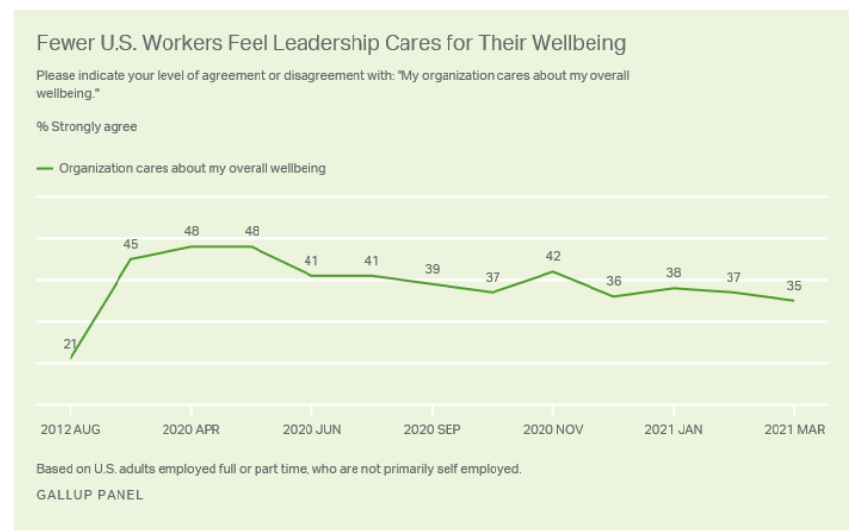10 well-being practices leaders should follow
A new Gallup report outlines exactly what leaders should do to embed well-being into their organization.

Many of us are eager to go back to “normal,” but there’s one aspect of that normal that no one should want to return: lack of well-being support. Well-being support in the workplace rose during the early months of the pandemic to 50%, according to Gallup, but that’s now losing steam, dropping 13% points since last spring.
There are 10 ways your leaders can support employee well-being, per Gallup, and communicators can help guide their efforts.
1. Maintain a strong and sustained leadership voice regarding the importance of well-being. Wellbeing efforts that stem from the CEO work best.
2. Demonstrate a shared and consistent definition of what is meant by “well-being.” The five elements are career, social, financial, physical and community. Well-being programs that clearly define what well-being are more successful.
3. Keep the line of communication constantly open. Have a meaningful conversation once a week with employees.
[RELATED: Join us June 30 for our wellness workshop: Crafting Programs & Messaging for Effective Workplace Wellness.]
4. Lead by example. As with anything, if you want well-being to be embedded in the culture, it starts from the top.
5. Include family members. A proven way to demonstrate your commitment to well-being is to invite family members to participate in activities, be they a 5K walk or cooking class.
6. Re-promote well-being programs and offerings. Don’t assume your staff knows what’s available to them.
7. Scientifically evaluate the effectiveness of well-being programs. Audit what’s working and what’s not.
8. Leverage employee engagement to drive employee well-being. Employee engagement is amplified by well-being. As we return to the workplace, engagement tactics to ensure workers feel safe about returning are critical.
9. Develop a network of local well-being coaches and champions who serve as resources to collect and share best practices. Use experts and influencers around physical health, community engagement, etc., to share effective techniques.
10. Aim strengths at well-being. Gallup recommends a strengths-based approach to well-being so you’re not fundamentally changing who a person is. This should happen during all stages of an employee’s life cycle, “attraction, hiring, onboarding, engaging, performing, developing and departure.”
Learn how to foster workplace cultures focused on employee well-being at our June 30 workshop, “Crafting Programs & Messaging for Effective Workplace Wellness.”







